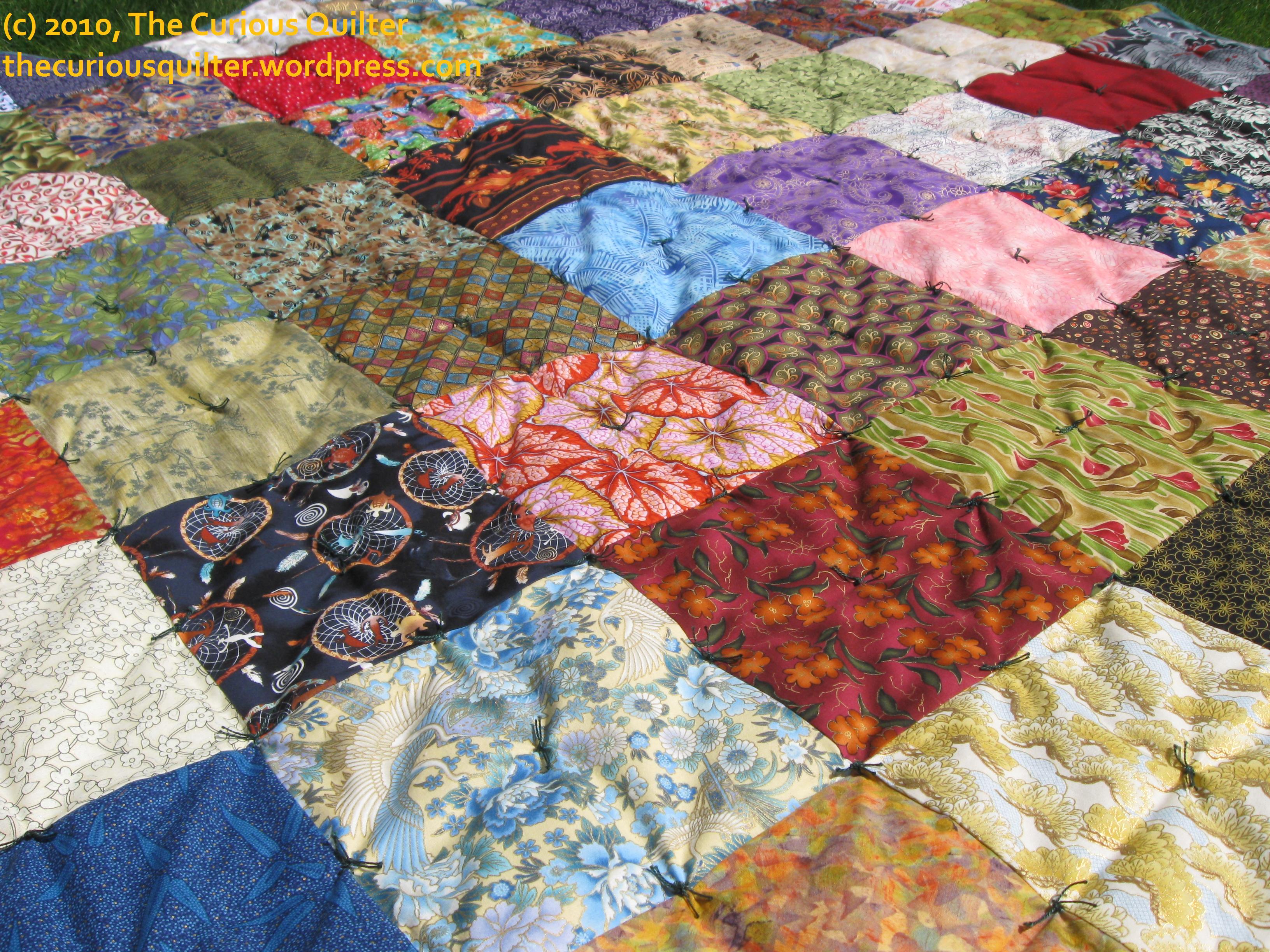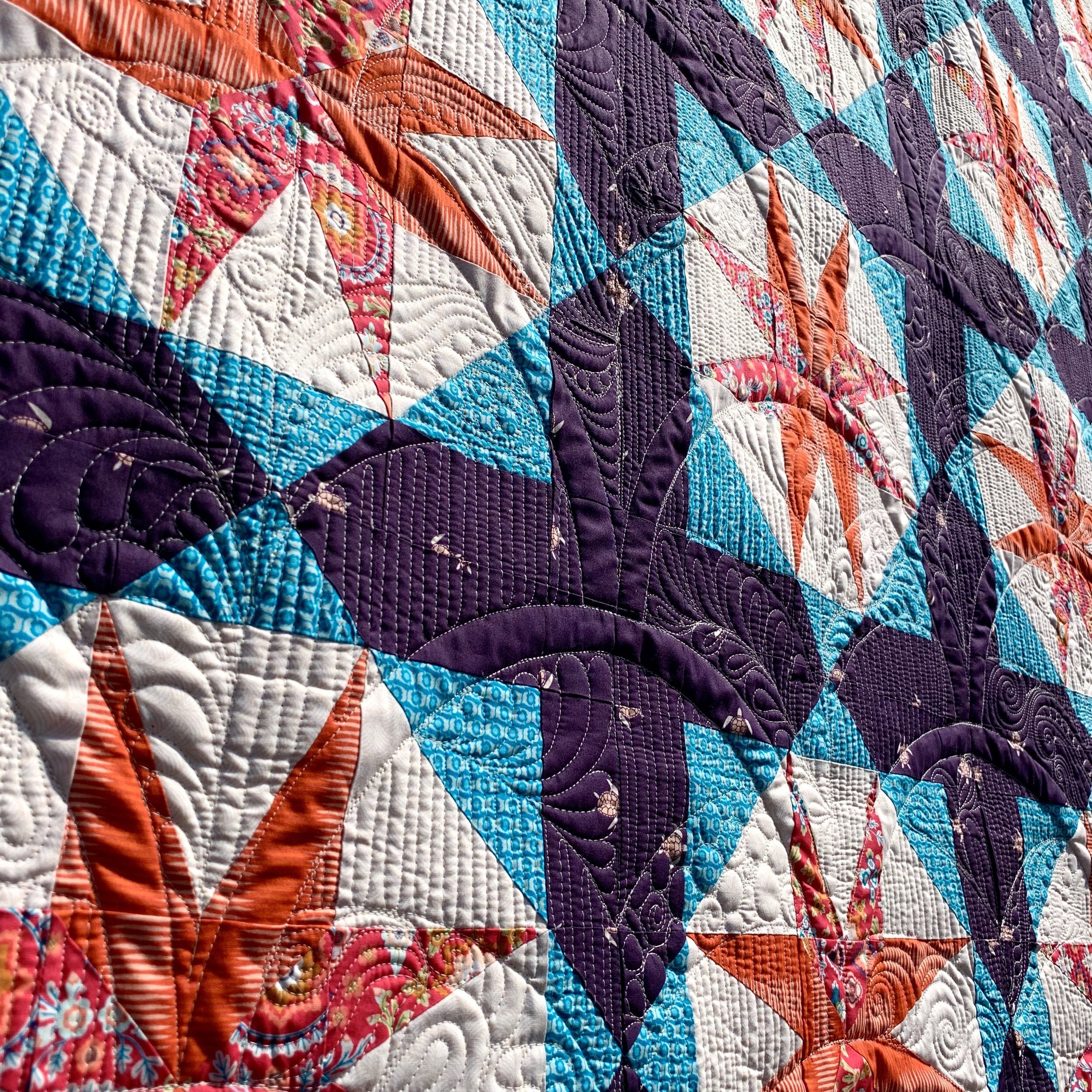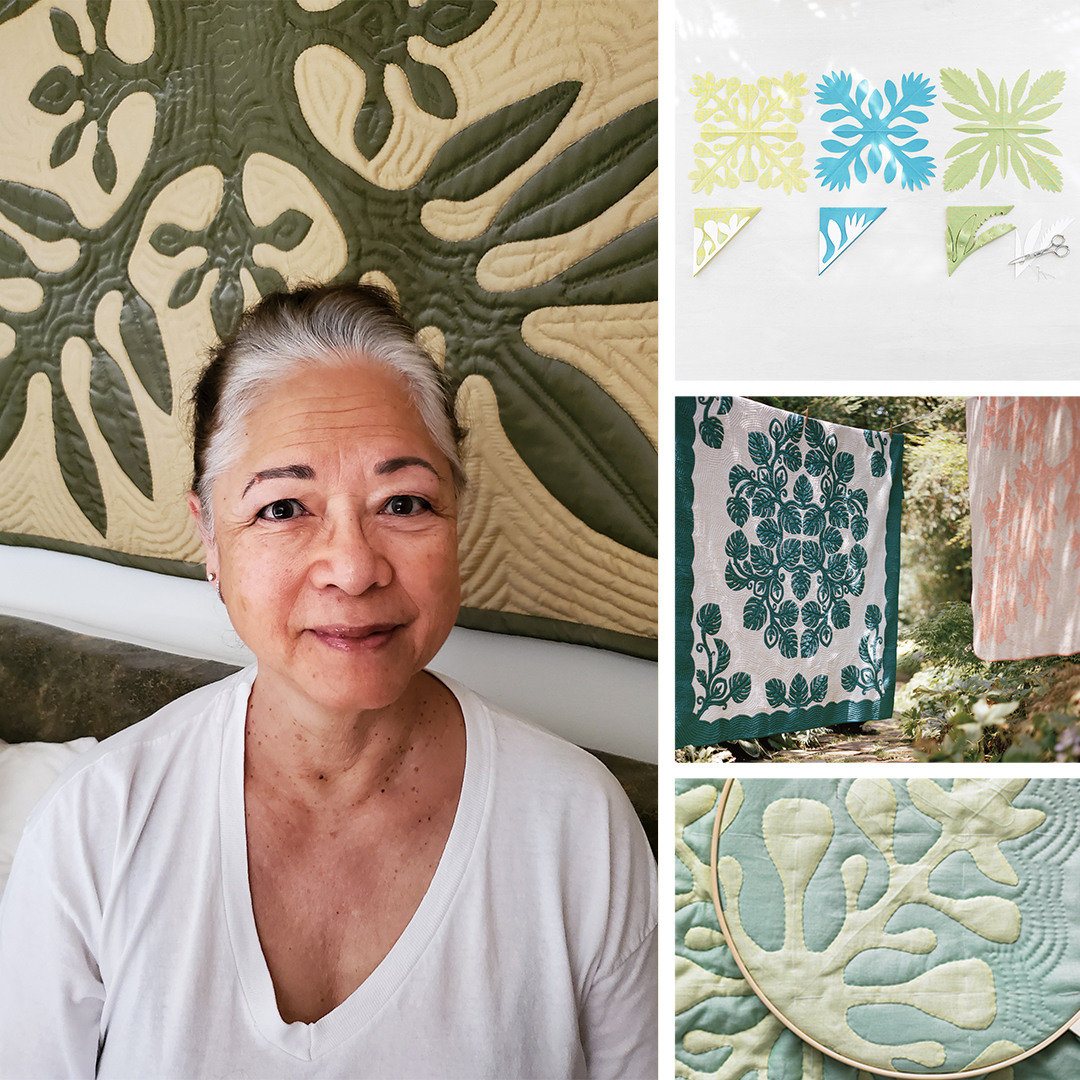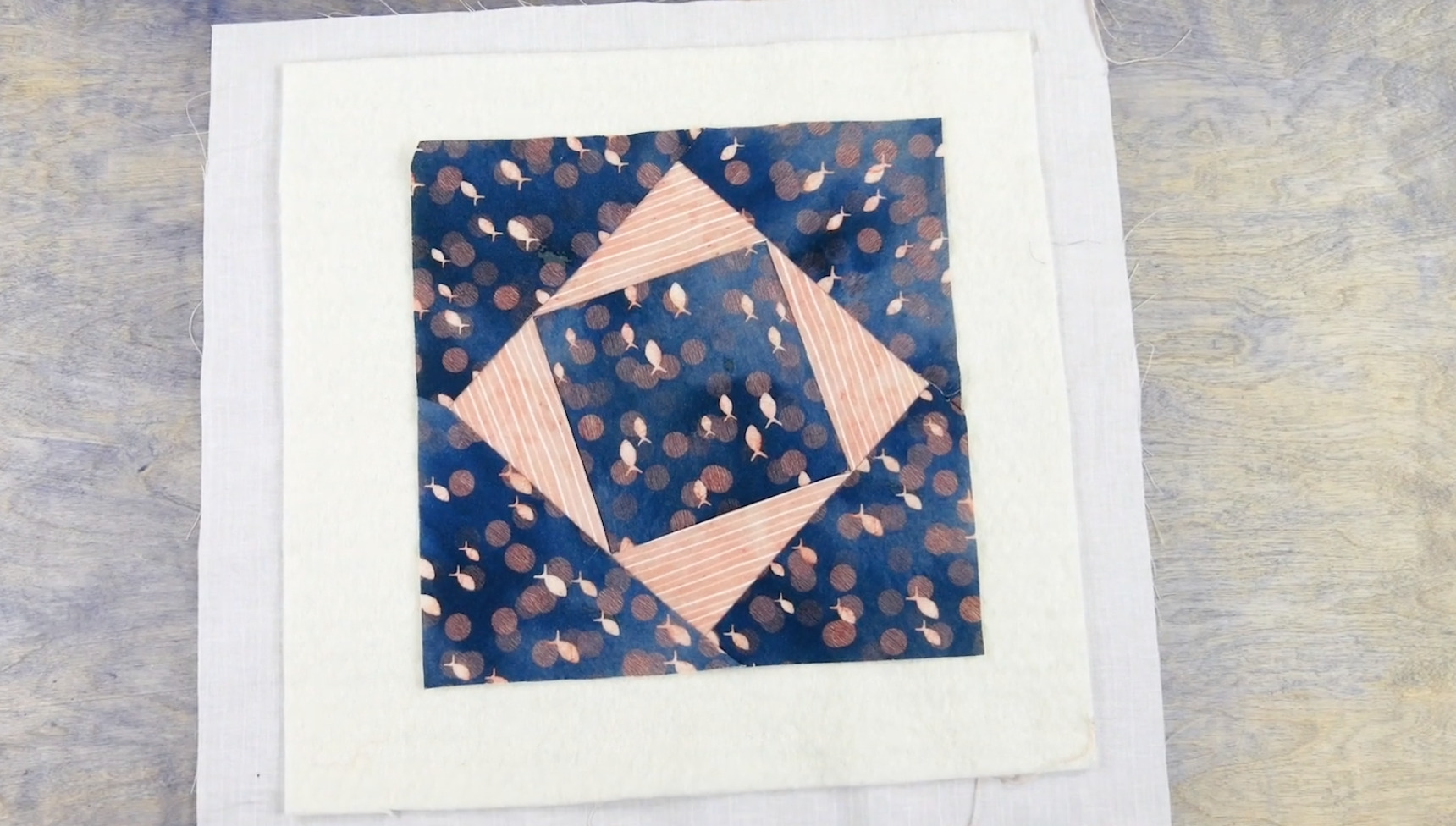If you are interested in discovering the secrets of traditional quilting, one of the most important aspects to consider is how many layers a traditional quilt has. Quilting is an art form that has been around for centuries, and the number of layers that a quilt has can vary depending on the type of quilt and the desired effect. In this article, we will explore the answer to the question: How many layers do most traditional quilts have?
Materials Needed for Traditional Quilts

- Fabric: The most important material in any quilt is the fabric. Choose fabrics that match the theme or color scheme of the quilt, or that coordinate with the other fabrics in the quilt.
- Batting: Batting is the layer in a quilt that gives it warmth, loft, and stability. Choose a batting that is appropriate for the quilt’s size, weight, and use.
- Thread: Thread is used to sew the quilt together, as well as to embellish and quilt the quilt. Choose thread that complements the colors of the quilt and that is strong enough to withstand the wear and tear of quilting.
- Scissors: Scissors are used to cut fabric, batting, and thread. Choose a pair of scissors that is comfortable to use and that is sharp enough to cut through multiple layers of fabric.
- Pins: Pins are used to hold the layers of a quilt together while it is being sewn. Choose pins that are strong enough to hold the layers together, but that are also easy to remove.
- Ruler: A ruler is used to measure fabric and batting, as well as to make sure that the quilt is being pieced together accurately. Choose a ruler that is easy to read and that is the correct size for the quilt.
- Needle: A needle is used to sew the quilt together. Choose a needle that is appropriate for the fabric and thread being used, as well as for the type of quilting being done.
When considering how many layers do traditional quilts have, the materials used to make them will vary. Generally, traditional quilts have three layers—the top fabric, the batting, and the backing fabric. However, other materials may be needed, such as thread, pins, scissors, and a needle.
Types of Traditional Quilts

Patchwork Quilts: Patchwork quilts are made from pieces of fabric sewn together in unique patterns. The pieces are usually cut into a variety of shapes, such as triangles, diamonds, squares, and hexagons. The pieces are then sewn together in a grid to create a pattern. These quilts often feature bright colors and intricate details.
Appliqué Quilts: Appliqué quilts are made by sewing pieces of fabric onto a larger piece of material. The fabric is usually cut into intricate shapes and then sewn onto the larger piece. These quilts often feature intricate patterns and bright colors.
Amish Quilts: Amish quilts are made by members of the Amish community in the United States. These quilts are usually made using traditional techniques and feature bold colors and geometric patterns.
Tie-Dye Quilts: Tie-dye quilts are made by taking pieces of fabric and dyeing them in a variety of colors. The dyed fabric is then sewn together to create a unique pattern. These quilts often feature bright, vibrant colors and unique patterns.
Log Cabin Quilts: Log cabin quilts are made from strips of fabric sewn together in a log cabin pattern. The strips are usually cut into different sizes and sewn together in a variety of patterns. These quilts often feature bold colors and intricate details.
Wholecloth Quilts: Wholecloth quilts are made from a single piece of fabric. The fabric is usually dyed in a variety of colors and then quilted with intricate stitching. These quilts often feature bold colors and intricate details.
How Many Layers Do Traditional Quilts Have?

Layer Thickness
Traditional quilts usually have three layers: the top layer, the batting, and the backing. Each layer has its own thickness and weight, and the combined layers form the quilt’s overall thickness. The top layer is typically the thinnest, while the batting and the backing are thicker and heavier.
Layer Placement
The three layers of a traditional quilt are placed in a specific order. The top layer is placed on top of the batting, and the backing is placed underneath the batting. This order is important, as it ensures that the quilt has the proper weight and thickness.
Layer Variety
The three layers of a traditional quilt can vary in terms of material, color, pattern, and texture. The top layer is typically made of cotton fabric, while the batting and backing may be made of wool, polyester, or other materials. The colors, patterns, and textures of the layers can also vary, creating an array of unique and beautiful quilts.
Overall, traditional quilts typically have three layers—the top layer, the batting, and the backing. Each layer has its own thickness and weight, and the combined layers form the quilt’s overall thickness. The top layer is typically the thinnest, while the batting and the backing are thicker and heavier. Additionally, the three layers can vary in terms of material, color, pattern, and texture, creating a variety of beautiful quilts.
Benefits of Traditional Quilts

| Benefits | Description |
|---|---|
| Durability | Traditional quilts are made from high-quality materials like cotton and wool, making them very durable and long-lasting. |
| Versatility | Traditional quilts come in a variety of colors and designs, allowing them to fit in any decor. |
| Affordability | Traditional quilts are relatively affordable, making them an ideal choice for those on a budget. |
| Easy Care | Traditional quilts are easy to care for and maintain, making them ideal for busy households. |
Traditional quilts offer many benefits, making them a popular choice for many households. They are durable, versatile, affordable, and easy to care for, making them a great choice for any room in the house.
Factors Impacting Layer Count of Traditional Quilts

Size: The size of the quilt determines how many layers it will have. A smaller quilt will typically have fewer layers than a larger one, as more layers can make a quilt too bulky and heavy.
Design: The design of the quilt will also impact the layer count. If the quilt is made up of intricate designs, then it will likely require more layers to make all of the intricate details stand out.
Fabric: The type of fabric used in the quilt will also affect the layer count. If a thicker fabric is used, it will require more layers to achieve a comfortable thickness.
Intended Use: The intended use of the quilt will also affect the layer count. If the quilt is intended to be used as a bedspread, then it will require more layers than if it is intended to be used as a wall hanging.
Season: The season in which the quilt is made will also impact the layer count. For example, a quilt made during the winter months may require more layers than one made during the summer months.
In conclusion, the layer count of traditional quilts can vary depending on the size, design, fabric, intended use, and season in which the quilt is made.
How to Make a Traditional Quilt

- Piecing: Piecing is the first step in making a traditional quilt. It involves sewing together small pieces of fabric to create a quilt top.
- Backing: The backing of the quilt is the second layer and is usually made of a single piece of fabric.
- Batting: The batting is the layer between the quilt top and the backing, and is usually made of cotton, wool, or polyester.
- Quilting: Quilting is the process of stitching the three layers of the quilt together.
- Binding: The binding is the final step in making a traditional quilt, and involves sewing the edges of the quilt together to give it a finished look.
Most traditional quilts have three layers: pieced top, batting, and backing. The batting gives the quilt warmth and structure, while the backing provides strength and durability. The quilt top is usually pieced together from smaller pieces of fabric, and the edges of the quilt are finished with binding.
Caring for a Traditional Quilt
A traditional quilt is a labor of love and requires special care to ensure its longevity. Here are some tips on how to properly care for a traditional quilt:
Handling: When handling a traditional quilt, keep it away from direct sunlight, as it can cause fading. Also, avoid contact with sharp objects, as it can damage the fabric.
Cleaning: Traditional quilts should only be spot cleaned. Vacuuming the quilt with a vacuum cleaner attachment is recommended, however, do not use a beater bar.
Storage: Traditional quilts should be stored in a dry and dark environment, as exposure to light can cause fading over time. The best way to store a traditional quilt is by folding it in a clean cotton sheet and placing it in an acid-free box.
Prevention: To prevent damage, use a quilt cover when displaying your quilt. This will protect the quilt from dust, dirt, and other particles.
Maintenance: Periodically check for any signs of wear and tear, such as loose threads and fraying. If any of these signs are found, have the quilt professionally repaired.
By following these tips, you can ensure that your traditional quilt will last for many years to come.
Frequently Asked Questions
What Types of Fabric and Batting Should be Used for Traditional Quilting?
Traditional quilts are typically made with 100% cotton fabrics and batting. Cotton is the most popular choice because it is lightweight, breathable, and easy to quilt. Polyester batting is also popular, as it has a higher loft and is easier to quilt.
What are the most common patchwork patterns used in traditional quilting?
Common patchwork patterns used in traditional quilting include Log Cabin, Nine-Patch, Block, and Pieced Border designs. Log Cabin is a classic pattern that consists of a square center and strips of fabric sewn around it to form a log-cabin shape. Nine-Patch involves arranging nine fabric squares in a three-by-three grid. Block patterns feature two or more blocks sewn together to form a larger design. Pieced Border designs are often pieced together in a variety of ways to create a unique border for a quilt.
Is it Necessary to Use a Quilting Frame for Traditional Quilting?
No, it is not necessary to use a quilting frame for traditional quilting. Quilting can be done without a frame, and many traditional quilters prefer the simplicity of hand-quilting without a frame. However, using a quilting frame can make the quilting process much easier and more efficient, especially when working on larger projects. The frame also helps to keep the quilt taut and even while quilting, which is important for achieving a quality finished product.
How do you go about choosing the right colors for a traditional quilt?
- Start by selecting a color palette.
- Think about the quilt’s design.
- Choose fabric for the quilt.
- Add contrast to the quilt.
- Use a color wheel.
- Be creative.
When selecting the colors for a traditional quilt, it is important to create a color palette. A color palette is a combination of the colors you choose to use for your quilt. Consider starting with a small selection of colors, such as three or four. You can use complementary colors or analogous colors to create your color palette.
The design of the quilt will have a major influence on the colors you choose. If you are making a quilt that is patterned with blocks, you may want to choose colors that have a common element, such as shades of the same color or similar hues. If you are making a quilt that is more free-form, you may want to use a larger range of colors.
Once you have determined the color palette for your quilt, you can start to choose the fabric for the quilt. Consider choosing fabrics with a variety of textures and patterns that will help to bring the quilt to life. Consider fabrics with small floral prints, plaids, solids, and stripes.
Adding contrast to the quilt will help to make it more visually appealing. Consider adding a few darker or brighter colors to the quilt. This will help to break up the quilt and add some depth to the design.
Using a color wheel can be a great way to ensure that the colors in your quilt are coordinated. A color wheel is a tool that helps you to visualize the relationship between colors. Consider using a color wheel to find colors that will look great together.
Lastly, don’t be afraid to be creative when selecting the colors for your quilt. While traditional quilts often use muted or neutral colors, there is no reason why you can’t use brighter or bolder colors if that is what you prefer.
What techniques are used to join the quilt layers together?
Most traditional quilts have three layers: a quilt top, a batting layer, and a backing layer. To join these layers together, quilters use a variety of techniques such as:
- Machine quilting
- Hand quilting
- Tying the quilt
- Fusible webbing
- Adhesive basting
Machine quilting involves stitching the quilt layers together with a sewing machine. Hand quilting involves stitching the layers together with a needle and thread. Tying the quilt involves knotting pieces of yarn between the layers. Fusible webbing is a paper-backed adhesive that can be used to hold the layers together. Adhesive basting is a spray adhesive that can be used to hold all the layers together.
Conclusion
Traditional quilts typically have three layers. The top layer or quilt top is made up of fabric pieces, the batting layer is made up of a layer of insulation, and the backing layer is usually made of a single piece of fabric. With quilting techniques such as piecing, applique, and embroidery, the quilter can create a variety of designs to achieve a wide range of effects. Quilting is an enjoyable craft that can be enjoyed by all ages.






